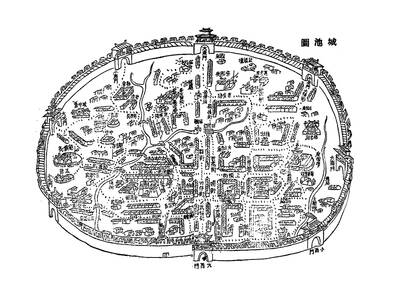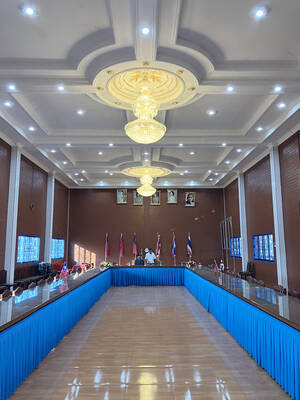Far and away the most enjoyable item I’ve watched recently is the version of Bach’s St John Passion conducted by Nikolaus Harnoncourt back in 1985, released on DVD last year.
For four years Bach wrote a 30-minute cantata every week. He would rule the staves on the paper on Monday morning, select an appropriate text, then compose the music for instrumentalists, soloists and chorus. The first rehearsal was on the Friday, the second, with the soloists added, on Saturday. The performance was at 8am on the Sunday morning in St Thomas’s Lutheran church in Leipzig.
But Good Friday demanded something special, so he wrote extended works based on the descriptions of Christ’s last hours given by the different evangelists. These semi-dramatic compositions are called “Passions” because, like Mel Gibson’s infinitely inferior film, they depict the suffering (“passion” in its older meaning) and death of Jesus.
Bach’s St Mark Passion has been lost, and the surviving St Luke Passion seems to be by someone else. But the St Matthew Passion is widely considered one of the greatest musical works of all time. The later St John Passion is scarcely less remarkable.
In the mid-1980s Harnoncourt was an enthusiast for “authentic” performances of Baroque music, i.e. ones using the instruments of the period rather than their modern equivalents. This is the case on this DVD, and it’s its weakest feature. Recorders instead of flutes do give a pleasantly woody sound, but you feel the recording engineers had to work hard to catch their altogether quieter tone. The antique string instruments were clearly even harder to deal with, and at times you can barely hear them at all.
Nonetheless, this is an absolutely superb DVD. Its main strengths are Harnoncourt’s intense commitment and a stunning performance by Kurt Equiluz as the Evangelist — his music is written very high, but he delivers it with a compelling incision. Jesus is sung by a bass, Robert Holl. There are various other “characters” — most notably Peter and Pilate.
The twin choruses are of adult males and boys respectively. The boys (the Tolzer Knabenchor) are fabulous, hurling themselves with expressively nodding heads into the role of the angry crowd calling for Christ’s crucifixion. Their frantic cries of “Jesus of Nazareth! Jesus of Nazareth!” have been haunting me in my sleep. There are also two boy soloists, of which the older is the better.
Most fascinating, though, is the nature of John’s narrative. He has always provided a different perspective from the other three evangelists, and Bach seems to have sensed this and come up with something original to match his vividly observed, personal account.
This is the finest classical DVD I’ve seen for a long time. Note when browsing for this item that the cover gives the work’s German name, Johannes-Passion.
Modernism in music had many summits. They’re all forbidding, but some are more accessible than others. Bartok’s six string quartets remain central items in the quartet repertory, but they do benefit from some explication. This is provided on an excellent product from Decca (DVD release 2006) in which members of the Takacs Quartet talk about and play quartets 2, 3 and 6.
First they introduce Bartok’s quartets in general, commenting on the Mongolian and North African influences, for instance, and saying that their own intention is to humanize what they thought of as difficult music on first acquaintance. The result is a DVD that’s educational while at the same time offering extremely fine performances of the three featured works.
TDK’s 2007 sampler Opera, Concert, Ballet 07 offers 22 excerpts, ranging from operatic arias from Vienna, Zurich, Barcelona and Paris, via Roland Petit ballets to complete symphonic movements. The value of this, as with all samplers, is to help you decide which complete product you might want to buy — hence, being promotional in intent, it’s offered at a special low price, around NT$300.
When I first saw Riccardo Muti’s version of Verdi’s Falstaff I wasn’t entirely convinced by it, but I’ve warmed to it since. It was filmed in the tiny opera house in Verdi’s hometown of Busseto, using the La Scala, Milan orchestra, but reduced in size. The sets and costumes mirror those of a production in 1913 in the same theater when Toscanini conducted what he always said was the master’s finest opera to mark what would have been Verdi’s 100th birthday.
A feature of this 2001 version (DVD release 2007) is that it gets better and better as it proceeds. Thus the fifth scene, in which Falstaff is persuaded to risk a second meeting with Alice and Meg, is a delightful chamber-music-like ensemble piece, with Quickly and Falstaff downstage and the others overhearing, and commenting, from behind. It’s simultaneously powerful and delicate — Verdi never wrote anything more enchanting.
Vocally, Juan Diego Flores is outstanding as Fenton, Barbara Fritolli makes a predictably strong Alice, and Ambrosio Maestri proves excellent in the title role. You do, though, have to wonder at the wisdom of the costumier’s choice when it comes to Falstaff’s bizarre hairpiece!

May 26 to June 1 When the Qing Dynasty first took control over many parts of Taiwan in 1684, it roughly continued the Kingdom of Tungning’s administrative borders (see below), setting up one prefecture and three counties. The actual area of control covered today’s Chiayi, Tainan and Kaohsiung. The administrative center was in Taiwan Prefecture, in today’s Tainan. But as Han settlement expanded and due to rebellions and other international incidents, the administrative units became more complex. By the time Taiwan became a province of the Qing in 1887, there were three prefectures, eleven counties, three subprefectures and one directly-administered prefecture, with

Taiwan Power Co (Taipower, 台電) and the New Taipei City Government in May last year agreed to allow the activation of a spent fuel storage facility for the Jinshan Nuclear Power Plant in Shihmen District (石門). The deal ended eleven years of legal wrangling. According to the Taipower announcement, the city government engaged in repeated delays, failing to approve water and soil conservation plans. Taipower said at the time that plans for another dry storage facility for the Guosheng Nuclear Power Plant in New Taipei City’s Wanli District (萬里) remained stuck in legal limbo. Later that year an agreement was reached

What does the Taiwan People’s Party (TPP) in the Huang Kuo-chang (黃國昌) era stand for? What sets it apart from their allies, the Chinese Nationalist Party (KMT)? With some shifts in tone and emphasis, the KMT’s stances have not changed significantly since the late 2000s and the era of former president Ma Ying-jeou (馬英九). The Democratic Progressive Party’s (DPP) current platform formed in the mid-2010s under the guidance of Tsai Ing-wen (蔡英文), and current President William Lai (賴清德) campaigned on continuity. Though their ideological stances may be a bit stale, they have the advantage of being broadly understood by the voters.

In a high-rise office building in Taipei’s government district, the primary agency for maintaining links to Thailand’s 108 Yunnan villages — which are home to a population of around 200,000 descendants of the Chinese Nationalist Party (KMT) armies stranded in Thailand following the Chinese Civil War — is the Overseas Community Affairs Council (OCAC). Established in China in 1926, the OCAC was born of a mandate to support Chinese education, culture and economic development in far flung Chinese diaspora communities, which, especially in southeast Asia, had underwritten the military insurgencies against the Qing Dynasty that led to the founding of